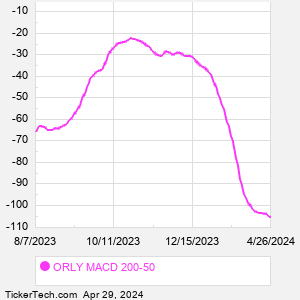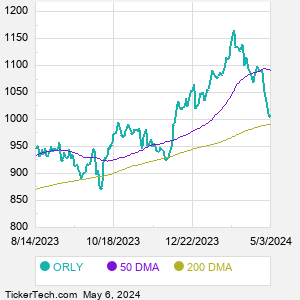O'Reilly Automotive is a specialty retailer of automotive aftermarket parts, tools, supplies, equipment and accessories, selling its products to both do-it-yourself and service provider customers. Co.'s stores carry a product line, including: new and remanufactured automotive hard parts and maintenance items, such as alternators, batteries, brake system components, belts, chassis parts, driveline parts, engine parts, fuel pumps, hoses, starters, temperature control, water pumps, antifreeze, appearance products, engine additives, filters, fluids, lighting, oil and wiper blades; and accessories, such as floor mats, seat covers and truck accessories.
When researching a stock like OReilly Automotive, many investors are the most familiar with Fundamental Analysis — looking at a company's balance sheet, earnings, revenues, and what's happening in that company's underlying business. Investors who use Fundamental Analysis to identify good stocks to buy or sell can also benefit from ORLY Technical Analysis to help find a good entry or exit point. Technical Analysis is blind to the fundamentals and looks only at the trading data for ORLY stock — the real life supply and demand for the stock over time — and examines that data in different ways. One of those ways is to calculate a Simpe Moving Average ("SMA") by looking back a certain number of days. One of the most popular "longer look-backs" is the ORLY 200 day moving average ("ORLY 200 DMA"), while one of the most popular "shorter look-backs" is the ORLY 50 day moving average ("ORLY 50 DMA"). A chart showing both of these popular moving averages is shown on this page for OReilly Automotive. Comparing two moving averages against each other can be a useful visualization tool: by calculating the difference between the ORLY 200 DMA and the ORLY 50 DMA, we get a moving average convergence divergence indicator ("ORLY MACD"). The ORLY MACD chart, in conjunction with the chart of the moving averages, basically helps in visualizing how the moving averages are showing convergence (moving closer together), or divergence (moving farther apart). |



